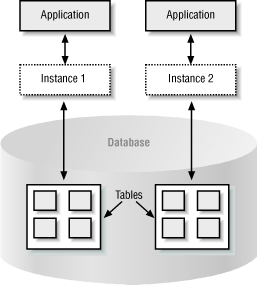Partitioning Techniques
You need to start planning for partitioning during the database analysis and design. In addition to dealing with the usual database analysis and design issues, you need to analyze every application and transaction with respect to the data that it accesses. Then you need to formulate an appropriate partitioning technique for each application.
There are three partitioning techniques that you can use in an OPS environment in order to reduce contention between instances:
- Application partitioning
Aligns applications and nodes in a manner that avoids inter-nodal conflicts.
- Data partitioning
Makes each node responsible for a different subset of the data within a table.
- Transaction partitioning
Makes each node responsible for a different set of tables. Transactions are then routed to the most appropriate node by a transaction monitor or by the applications themselves.
Application Partitioning
Application partitioning is the process of separating database applications in such a way that each OPS node accesses a disjoint set of tables. Figure 11.2 shows two applications that are neatly partitioned between two nodes. Instance 1 runs the sales application, which has its own set of tables. Instance 2 runs the accounts application, which uses a different set of tables.

Figure 11-2. A neatly partitioned application
Tables used by multiple applications are referred to as overlap ...
Get Oracle Parallel Processing now with the O’Reilly learning platform.
O’Reilly members experience books, live events, courses curated by job role, and more from O’Reilly and nearly 200 top publishers.

